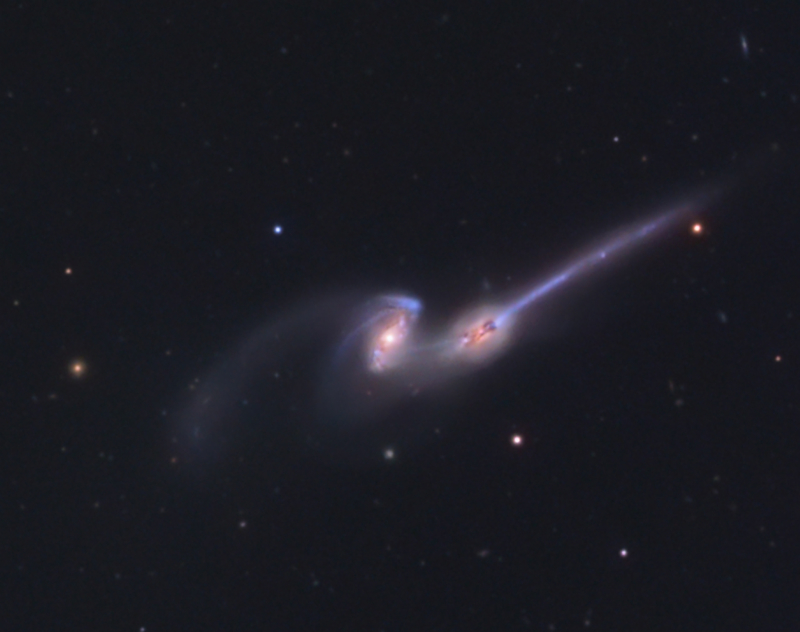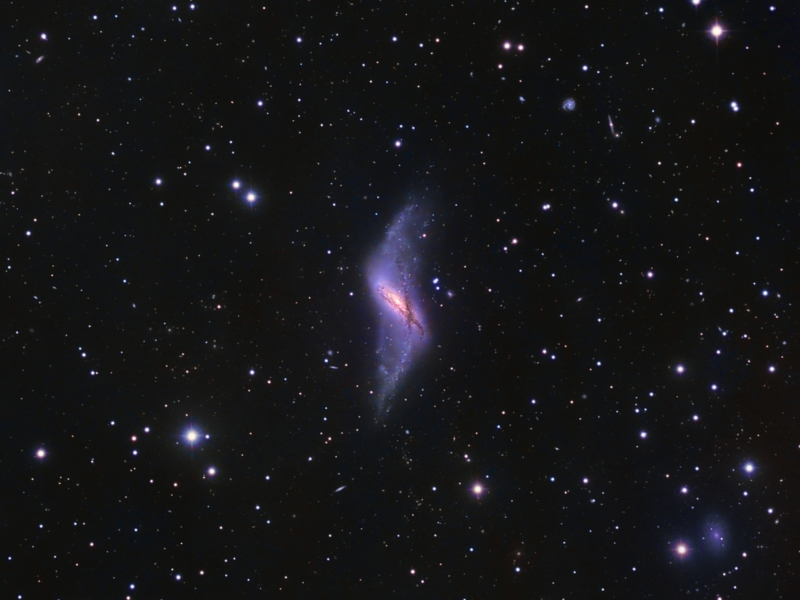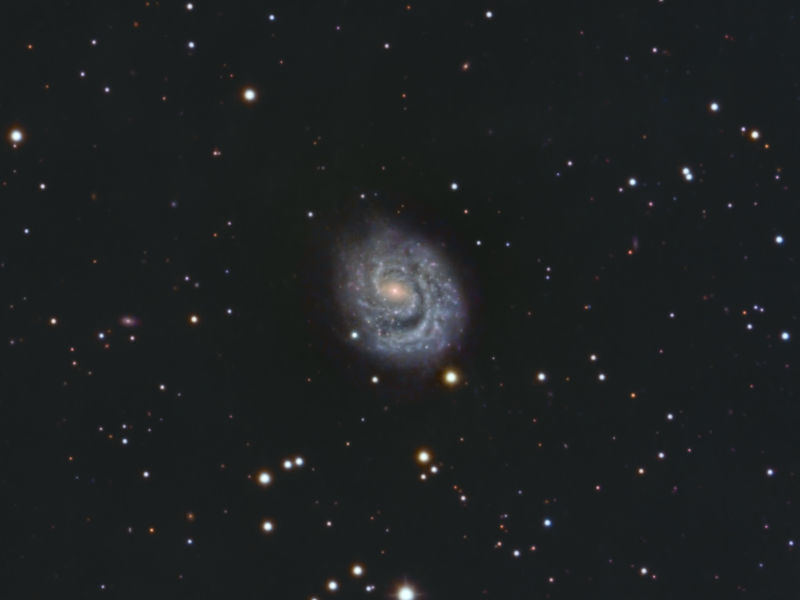NGC 4676 - Mice Galaxies
NGC 4676, known as the Mice Galaxies, are two spiral galaxies in the constellation Coma Berenices, approximately 290 million light years from Earth. The long tails result from tidal action — the relative difference in gravitation pull on the near (colliding) and far sides of the galaxies. The galaxies are incredibly dim and small, providing quite a challenge from our light polluted skies outside of Bangkok.
This image was taken with our Officina Stellare RiLA 600 f/5.0 telescope on an Officina Stellare direct drive polar fork mount. An FLI ML16200 CCD camera, chilled to -25C, captured 16-1/2 hours of luminance detail and 9 hours of color detail. The imaging system is controlled using Voyager software. Image processing in PixInsight and Photoshop.
Imaged and processed in Samphran, Thailand by the SC Observatory team: Mike Selby, Stefan Schmidt and Andy Chatman.
Object details
Galaxy in Coma Berenices
Right Ascension: 12h 46m 10.1s
Declination: +30° 43′ 55″
Magnitude: 14.7
Moon Age Average: N/A
Moon Phase Average: N/A
Imaging Setup
SC Observatory, Central Thailand
Voyager
Adobe Photoshop
PixInsight 1.8
Exposure Detail
| Filter | Filter Brand | Bin | Qty | Exposure |
|---|---|---|---|---|
| L | Astrodon | 1x | 2 | 720 |
| L | Astrodon | 1x | 68 | 600 |
| L | Astrodon | 1x | 28 | 480 |
| R | Astrodon | 2x | 55 | 240 |
| G | Astrodon | 2x | 47 | 240 |
| B | Astrodon | 2x | 44 | 240 |




